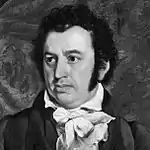Parley Gulbrandsen
Parley Birger Gulbrandsen Eugen (Chinese: 金寶立, pinyin: Jīn Bǎolì, born October 30, 1889 in Christiania, died 1959 in Norway) was a Norwegian missionary to China affiliated with the Norwegian Evangelical Mission (NEM) which belonged to the Pentecostal movement.[1] He was the brother of Henry Gulbrandsen, who was also a missionary to China.
After coming in contact with a Pentecostal meeting at the Filadelfia Assembly in Christiania, Gulbrandsen studied their teachings at the mission's home in Stabekk during 1909. Afterwards he studied at the Bible Training Institute in Glasgow in Scotland. In September 1910, he went to China, and worked in the North Chihli Mission until 1914. He was active in the Longmen district (龍門縣). In 1916, he joined Norwegian Free Evangelical Mission Association (Norges Frie Evangeliske Missionsforbund, NFEH), launched by the Pentecostal Movement in Norway the previous year. When this mission was dissolved in 1934, the former Norwegian missionaries of the NFEH were directly supported by local churches in Norway. Parley Gulbrandsen was in charge for the work at Xinbao'an (新保安) in Zhili (later part of Chahar). This work, which was begun in 1916, became known as the Norwegian mission in Sinpaoan. In Norway, the work was supported by the Filadelfia Saint Olavsgt. 24 in Oslo. Gulbrandsen later worked in the Xuanhua District, Longguan and Beijing. He returned to Norway in the 1948 and died in 1959.
Parley Gulbrandsen had in 1911 married Christina Beruldsen in China.
Works
- Greetings from China (Hilsen fra Kina), 1926
- Thoughts about the outer mission and a brief overview of Pentecostal mission field, (Noen tanker om den ytre misjon og en kort oversikt over pinsevennenes misjonsfelt)Oslo: Filadelfia, 1939
Literature
- Johansen, Oddvar; Hagen, Kjell; Nyen, Astrid Neema; Kolbjørnsrud, Paul and Filberg, Trond. 2010. In all the world. Pentecostal Mission in 100 years. PYM 100 years 1910-2010(anniversary writing) The Norwegian Pentecostal Church (PYM).
- Norwegian Mission Lexicon, Volume 2, sp. 143.
